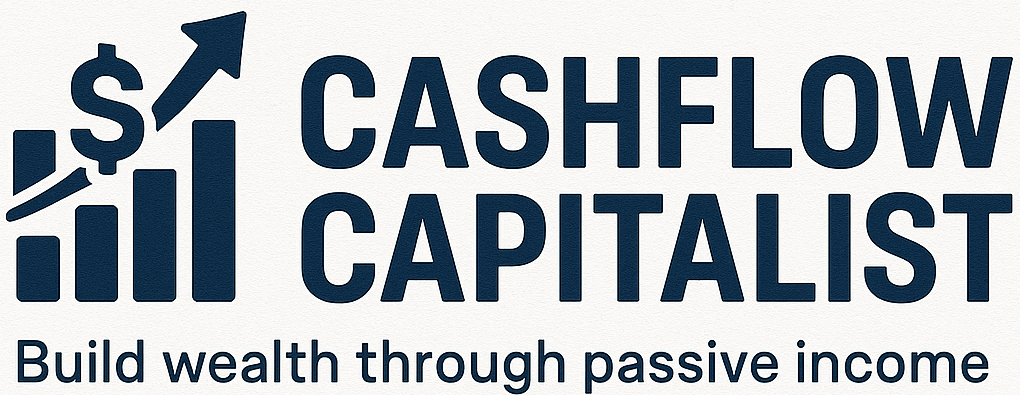How to Build Passive Income from REITs: A Beginner’s Guide to Earning Monthly Cash Flow in 2025
You don’t need to be a landlord to earn real estate monthly dividends. REITs (Real Estate Investment Trusts) let you invest in property. You can grow your wealth without managing properties directly.

By investing in Canadian REITs, you can get a steady passive income. This guide will show you how to start a real estate empire with REITs. It’s a detailed REIT investing guide for those new to REITs in Canada 2025.
Key Takeaways
- Learn how to invest in REITs for monthly dividends.
- Understand the benefits of Canadian REITs for passive income.
- Discover how to build a real estate portfolio using REITs.
- Get started with a detailed REIT investing guide.
- Maximize your wealth with REITs Canada 2025.
Understanding REITs: Your Gateway to Real Estate Investing Without Property Ownership
REITs let you invest in real estate without owning properties. They offer a way to earn rental income without the work of being a landlord. This makes investing in real estate easier and more accessible.

What Are REITs and How Do They Work?
REITs, or Real Estate Investment Trusts, own or finance real estate that makes income. They let people invest in many properties at once. This way, you can earn rental income without managing properties yourself.
REITs must give at least 90% of their income to shareholders. This makes them a great choice for those looking for passive income.
The Canadian REIT Market in 2025
The Canadian REIT market is growing, with many investment options. You can find REITs for residential, commercial, and industrial properties. For more info on real estate investing in Canada, check out this resource.
The market’s variety lets investors pick REITs that fit their goals and risk level.
Why REITs Are Ideal for Passive Income Seekers
REITs are great for passive income seekers. They offer regular income without the daily tasks of property management. With REITs, you can enjoy real estate benefits like rental income without managing properties yourself.
Types of REITs for Your Investment Portfolio
Investing in REITs is key for a diverse portfolio. As someone looking for passive income, you have many choices. Each has its own strategy and return possibilities.
Equity REITs: Owning Income-Producing Properties
Equity REITs own properties like offices, apartments, and malls. They make money from rent and property value growth. For example, Realty Income focuses on retail and industrial, giving steady income.

Mortgage REITs: Financing Real Estate
Mortgage REITs invest in real estate-backed debt. They earn from interest. But, they can be riskier due to interest rate changes, as Investopedia warns.
Hybrid REITs: The Best of Both Worlds
Hybrid REITs mix equity and mortgage strategies. They offer a balanced approach to real estate. This balance can lead to both income and growth.
REIT ETFs: Diversified Exposure in One Investment
REIT ETFs are great for broad exposure to REITs. They track a REIT index, making it easy to invest in many real estate assets with one investment.
REITs vs. Direct Property Investment: Why REITs Win for Passive Income
REITs are a great choice for those looking for passive income. They offer a simple way to invest in real estate without the hassle of direct property investment.
No Landlord Headaches: Management-Free Real Estate Exposure
One big plus of REITs is they don’t require you to manage properties. You won’t have to worry about tenants, repairs, or maintenance. This makes REITs perfect for those who don’t want to handle property management.

Liquidity Advantages of REIT Investments
REITs are easy to buy and sell on major stock exchanges. This is a big plus compared to direct property, which can take a long time to sell. With REITs, you can quickly change your investment portfolio.
Lower Entry Costs and Instant Diversification
Investing in REITs requires less money than buying a property. Plus, REITs let you diversify your investment easily. You can invest in different types of properties with just one purchase.
| Investment Criteria | REITs | Direct Property |
|---|---|---|
| Management Involvement | Low | High |
| Liquidity | High | Low |
| Entry Costs | Lower | Higher |
| Diversification | Easy | Challenging |
Professional Management Working for You
REITs are managed by experts who handle all the property work. This means you get to enjoy the benefits of real estate without the daily tasks. For more on using your passive income, check out 7 Smart Ways to Reinvest Your Passive.
Top Canadian REITs to Consider in 2025
The Canadian REIT market is full of chances for investors looking for passive income in 2025. There’s a wide range of REITs in various sectors. This means you can pick from residential, commercial, industrial, or healthcare properties to meet different market needs.
Residential REITs: Capitalizing on Housing Demand
Residential REITs are a good choice because people always need places to live. Boardwalk REIT is a great example. It owns apartment communities all over Canada. They show stability and growth, making them a reliable choice for steady income.

Commercial REITs: Office and Retail Opportunities
Granite REIT is a top pick for those interested in office and retail spaces. Their properties are in key locations, providing a steady income. Their professional management and long-term leases add to their appeal.
Industrial REITs: Warehousing and Logistics
The growth of online shopping has boosted demand for industrial spaces. QuadReal Property Group’s industrial portfolio is a great investment. It includes warehouses and logistics facilities, key for the supply chain. You can find various REITs focused on industrial properties to explore.
Healthcare REITs: Stability Through Essential Services
Healthcare REITs, like Chartwell Retirement Residences, focus on healthcare and seniors’ housing. These REITs are stable because their properties are essential. They often have long-term leases with healthcare providers. For more on dividend stocks, check out top Canadian dividend stocks.
Looking at these top Canadian REITs across sectors can help you build a diverse portfolio. Each REIT has its own benefits and income possibilities. This lets you plan your investments wisely.
How to Buy REITs: Setting Up Your Investment Accounts
To start earning passive income with REITs, you need to open the right investment account. In Canada, you can use tax-advantaged accounts to make your REIT investments more effective.
Investing Through Tax-Advantaged Accounts: TFSA vs. RRSP
When investing in REITs, you have two main options: the Tax-Free Savings Account (TFSA) and the Registered Retirement Savings Plan (RRSP). Your choice depends on your financial goals and tax situation.
- TFSA: Your investments grow tax-free, and withdrawals are tax-free too.
- RRSP: Contributions are tax-deductible, but withdrawals are taxed as income.
Choosing the Right Brokerage for REIT Investments
After picking your account type, you need to find a brokerage. Look for one with low fees, an easy-to-use platform, and a wide selection of REITs.

Step-by-Step Guide to Making Your First REIT Purchase
Here’s how to buy REITs:
- Research and pick the REITs you want to invest in.
- Determine how much you want to invest.
- Use your brokerage to place an order.
- Keep an eye on your investment and make changes if needed.
Dollar-Cost Averaging vs. Lump Sum Investing in REITs
Choose your investment strategy: dollar-cost averaging or lump sum investing. Dollar-cost averaging can help with market ups and downs. Lump sum investing might be better if the market is expected to go up.
Building Passive Income from REITs: Creating Your Monthly Cash Flow Strategy
To get a steady monthly income from REITs, you need a smart investment plan. Knowing how to manage your REITs well can help you earn a regular income.
Creating a REIT Income Ladder for Consistent Payments
A REIT income ladder means spreading your money across different REITs. Each one pays dividends at a different time. This way, you get money every month.
Balancing Monthly and Quarterly Dividend Payers
To keep your income steady, mix REITs that pay monthly with those that pay quarterly. This mix keeps your money coming in regularly.
Setting Realistic Income Goals: What to Expect from Your Investment
When setting income goals, know the dividend yield of your REITs. Also, understand how well your investments are doing. Setting realistic goals means doing your homework and knowing the market.
How Much Capital You Need for Meaningful Monthly Income
The capital needed for a good monthly income from REITs varies. It depends on the dividend yield and your investment plan. A mix of high-yield REITs in your portfolio can help reach your income goals.
By using these strategies, you can build a strong passive income plan. This plan will help meet your financial needs.
Evaluating REITs: Key Metrics for Smart Investing
To evaluate REITs, you need to look at several important metrics. These metrics show how well a REIT is doing financially and if it can keep paying dividends. Knowing these metrics helps you make smart choices with your REIT investments.
Understanding Funds From Operations (FFO) and AFFO
Funds From Operations (FFO) and Adjusted Funds From Operations (AFFO) are key for checking a REIT’s performance. FFO is the REIT’s net income, minus depreciation and amortization. AFFO is FFO minus capital expenses and other non-cash items. These metrics help show if a REIT can make enough cash to pay dividends.
Analyzing Payout Ratios and Dividend Safety
The payout ratio shows how much of a REIT’s earnings go to dividends. It’s calculated by dividing the dividend by the FFO or AFFO per share. A good payout ratio is usually under 100%. This means the REIT has enough money for growth and unexpected costs. Looking at the payout ratio helps investors see if the dividend is safe and if it can grow.
Assessing Debt Levels and Interest Coverage
A REIT’s debt and interest coverage are key to its health. The debt-to-equity ratio shows how much debt the REIT has. The interest coverage ratio shows if it can pay its interest. A high debt level and low interest coverage can be risky, so it’s important to watch these numbers.
Property Portfolio Quality and Tenant Diversification
The quality and variety of a REIT’s properties are very important. Look for REITs with properties in popular areas, a mix of tenants, and long leases. This mix helps reduce risks and ensures a steady income.
By carefully looking at these metrics, investors can make better choices. This can lead to success in the real estate investment trust market over the long term.
Risk Management: Balancing Yield and Safety in Your REIT Portfolio
Building a REIT portfolio means managing risk to get steady returns. It’s about choosing the right mix of yield and safety. Also, diversifying and keeping an eye on the economy are key.
High Yield vs. Dividend Growth REITs
Choosing between high-yield and dividend growth REITs is a big decision. High-yield REITs give quick income but might not last. Dividend growth REITs start with lower yields but could grow your income over time. A mix of both in your portfolio is a smart move.
Sector Diversification to Minimize Risk
Spreading your REIT investments across sectors can lower risk. Investing in residential, commercial, industrial, and healthcare REITs helps. This way, you’re not hit hard by a downturn in one sector. For a recession-proof portfolio, check out this article on smart investing for tough times.
Economic Factors Affecting REIT Performance in 2025
Interest rates, inflation, and GDP growth affect REITs a lot. For example, higher interest rates can make borrowing more expensive for REITs. Keeping up with these trends and adjusting your portfolio is key to managing risk.
Warning Signs of Possible Dividend Cuts
Watching for signs of dividend cuts is vital. Look out for declining FFO, high payout ratios, and rising debt. Regular checks on these can help you act fast to protect your income.
Dividend Reinvestment: Accelerating Your Wealth Building
Dividend reinvestment is a key way to grow your wealth with REITs. It uses dividend reinvestment plans (DRIPs) to boost your long-term finances.
How DRIP Programs Work with REITs
DRIP programs let you automatically put your dividend payments into more shares of the same REIT. This is often free of commission, making it a smart way to grow your investment. Many Canadian REITs offer DRIPs, helping investors get the most from their money.
Compound Growth: The Power of DRIPs
DRIPs are powerful because they create compound growth. Your dividend payments are reinvested, earning dividends on dividends. This snowball effect can greatly increase your wealth over time. For instance, investing $10,000 in a REIT with a 5% dividend yield and reinvesting dividends can significantly grow your investment over 10 years.
When to Reinvest vs. When to Take Income
Deciding whether to reinvest dividends or take them as income depends on your goals. Reinvesting is good for long-term wealth, but taking dividends as cash might be better if you need income. It’s important to find a balance that fits your investment strategy.
Calculating Your Long-Term Wealth Accumulation
Let’s look at an example. Investing $1,000 monthly in a REIT with a 6% annual return, compounded monthly for 20 years, could grow your investment to over $500,000. Learn more about long-term investing in our guide on stock market investing.
| Investment Period | Total Investment | Estimated Growth |
|---|---|---|
| 10 years | $120,000 | $180,000 |
| 20 years | $240,000 | $500,000 |
| 30 years | $360,000 | $1,000,000 |
By using DRIP programs, you can greatly increase your wealth through REIT investments. It’s important to know your financial goals and adjust your reinvestment strategy to meet them.
Conclusion: Creating Your REIT Passive Income Plan for 2025 and Beyond
You now know how to make money from REITs passively. By using the strategies we talked about, you can create a steady income stream. This matches your long-term investing goals.
To start your REIT passive income plan, spread your investments across different areas. This includes residential, commercial, and industrial REITs. It helps reduce risk and increase returns. Investing in REIT ETFs is a quick way to diversify.
When planning your REIT strategy, look at important metrics like Funds From Operations (FFO) and payout ratios. Also, check the debt levels to pick stable REITs. Using a dividend reinvestment plan can speed up your wealth growth.
By taking a long-term view and planning well, you can get regular monthly income. This will help you reach your financial goals.
FAQ
What is a REIT, and how does it work?
A Real Estate Investment Trust (REIT) is a company that owns or finances real estate. It lets people invest in real estate without managing properties themselves. REITs make money by renting out properties or collecting interest on mortgages.
What are the benefits of investing in REITs?
REITs offer many benefits. They provide diversification, liquidity, and regular income through dividends. They also make it easy to invest in real estate without the need for direct property management.
What types of REITs are available for investment?
There are several types of REITs. Equity REITs invest in income-producing properties. Mortgage REITs invest in mortgages and other debt securities. Hybrid REITs mix elements of both equity and mortgage REITs.
How do I invest in REITs?
You can invest in REITs through a brokerage account. You can buy individual REIT stocks or invest in a REIT ETF. You can also invest in REITs through tax-advantaged accounts like a TFSA or RRSP.
What are the key metrics for evaluating REITs?
Key metrics for evaluating REITs include Funds From Operations (FFO), payout ratios, debt levels, and property portfolio quality. These metrics help investors understand a REIT’s financial health, dividend sustainability, and growth prospects.
How can I generate a consistent monthly income from REITs?
To get a consistent monthly income from REITs, create a REIT income ladder. Invest in a mix of REITs with different dividend payment schedules. It’s also important to set realistic income goals and diversify your REIT portfolio.
What is a dividend reinvestment plan (DRIP), and how does it work with REITs?
A DRIP lets investors automatically reinvest their dividend payments into more shares. With REITs, DRIPs can help grow your wealth over time by compounding dividend payments.
How do I manage risk in my REIT investments?
To manage risk in your REIT investments, diversify your portfolio across different sectors and geographic regions. It’s also important to watch economic factors that could affect REIT performance and be aware of signs of dividend cuts.
Can I invest in REITs through a TFSA or RRSP?
Yes, you can invest in REITs through a TFSA or RRSP. These accounts offer tax benefits like tax-free growth or deferred taxation, depending on the account type.
What is the difference between a REIT ETF and individual REIT stocks?
A REIT ETF is a diversified investment that tracks a particular index of REITs. It provides broad exposure to the REIT market. Individual REIT stocks represent ownership in a specific company. REIT ETFs offer instant diversification and reduced risk compared to individual REIT stocks.




